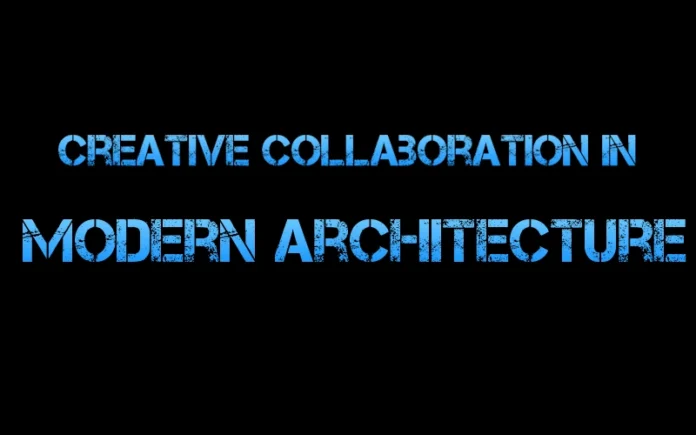Key Takeaways
- Collaboration in architecture fosters new ideas and solutions that one discipline alone might not conceive.
- Diverse viewpoints lead to architectural designs that are functionally innovative and culturally significant.
- Technology catalyzes productive collaborations on both local and global scales.
Table of Contents
- The Importance of Collaboration in Architecture
- Historical Perspectives on Architectural Collaboration
- Modern Tools Enhancing Collaborative Efforts
- Case Studies of Successful Collaborations
- Challenges in Collaborative Architectural Projects
- Future Trends in Architectural Collaboration
- Conclusion
In today’s rapidly paced world of design and construction, embracing creative collaboration has never been more crucial for achieving architectural success. Architects who actively engage with multidisciplinary teams are not only able to push the boundaries of innovation but also ensure that built environments are adaptable, human-centered, and sustainable for future generations. One standout example of such a collaborative ethos can be found at Studio Thomas, where fostering meaningful partnerships drives every stage of the architectural process.
The concepts of teamwork and collective creativity enable firms to deliver projects that are more thoughtful and responsive to client needs. Instead of working in silos, architects, engineers, artists, and specialists pool their expertise, cultivating ideas that lead to practical yet imaginative outcomes. These collaborative projects often give rise to holistic environments that respond to cultural, environmental, and technological shifts, making the field of architecture a powerful model for cross-disciplinary problem-solving.
Amplified by modern communications and digital platforms, global collaboration is now easier and more impactful than ever before. Engaged teams adapt quickly to changes, iterate designs in real time, and address community feedback. This process opens up new possibilities for transformative spaces—whether reimagining urban infill, preserving historic structures, or developing sustainable solutions tailored to unique contexts.
Central to this collaborative spirit is the recognition that architecture shapes not just buildings, but the experiences and well-being of people who interact with them. As creativity is fueled by connection, open dialogue becomes a medium through which innovative, inclusive design flourishes.
The Importance of Collaboration in Architecture
Architectural excellence emerges when diverse voices unite around a shared vision. The drive to innovate must be balanced with the rigors of safety, sustainability, and usability. By drawing on the skills of engineers, urban planners, landscape architects, and other professionals, architects can design buildings that stand the test of time and meet the community’s needs. According to Re-thinking the Future, collaborative architecture emphasizes the integration of multiple perspectives to create designs that are both innovative and practical.
Collaborative practice creates opportunities for ongoing learning and growth. Junior designers benefit from mentorship, construction experts suggest practical refinements, and environmental consultants help guide responsible resource use. The resulting interdisciplinary exchange is a wellspring for creative thinking and practical design solutions.
Historical Perspectives on Architectural Collaboration
Collaboration is hardly a new phenomenon just look to the Gothic cathedrals of Europe or the great wonders of the ancient world. These monumental works were the result of collective vision, intensive labor, and the merging of art and science. Collaboration was not limited to builders and architects; artisans, masons, and patrons all played vital roles in completing iconic structures that continue to inspire today. This historical precedent underscores the idea that successful architecture is rarely the product of a single individual, but rather reflects the aggregation of input and expertise.
Foundational examples also extend into the modern era. The interdisciplinary Bauhaus movement, for example, blurred distinctions between artists, architects, and craftsmen, greatly influencing design and construction methodologies worldwide.
Modern Tools Enhancing Collaborative Efforts
The digital revolution has radically changed how architects collaborate. Building Information Modeling (BIM) technology, for instance, enables teams to visualize, coordinate, and update project data in real time, improving efficiencies and reducing errors. Cloud-based platforms streamline communications, making it possible for teams across continents to stay seamlessly connected throughout each phase of a project.
International design competitions and initiatives, hosted on platforms such as Buildner and ArchDaily, foster innovation by bringing together diverse creative talent to solve pressing architectural challenges. With advanced visualization and modeling tools, design ideas can now be shared, tested, and refined at unprecedented speed.
Challenges in Collaborative Architectural Projects
Collaboration, while richly rewarding, is not without its difficulties. Differences in priorities, schedules, and communication styles can lead to friction among team members. Budget limitations, regulatory hurdles, and differing visions for a project’s outcome also require thoughtful negotiation and the willingness to compromise. Architects must act as facilitators, uniting stakeholders with contrasting agendas around a cohesive design strategy. Regular communication and clear project management are vital for navigating and overcoming these challenges.
Future Trends in Architectural Collaboration
Looking forward, artificial intelligence and machine learning promise to further enhance collaborative workflows. There is an increasing emphasis on co-design, which invites end users and marginalized groups into the creative process, ensuring that solutions are equitable and truly reflective of those who will live and work within these environments. This approach fosters a deeper sense of ownership and inclusivity, encouraging diverse perspectives to shape outcomes. As technology evolves, integrating human-centered design principles will be crucial in creating environments that are both innovative and socially responsible.
Conclusion
Collaboration lies at the very core of architectural progress. By bringing together diverse minds and perspectives, the profession produces works that are both functional and imaginative, and deeply rooted in community values. Embracing new technologies and inclusive design practices, architects are poised to lead the future of the built environment one shaped by connection, ingenuity, and enduring partnerships.

